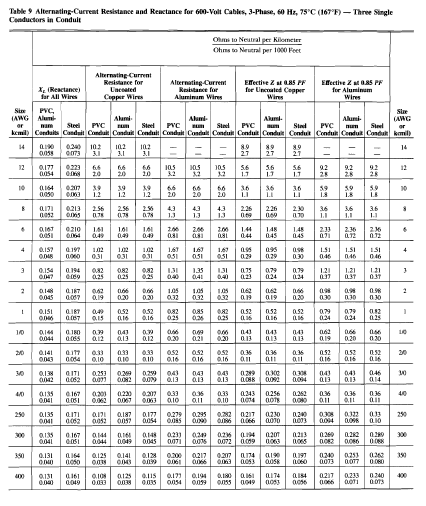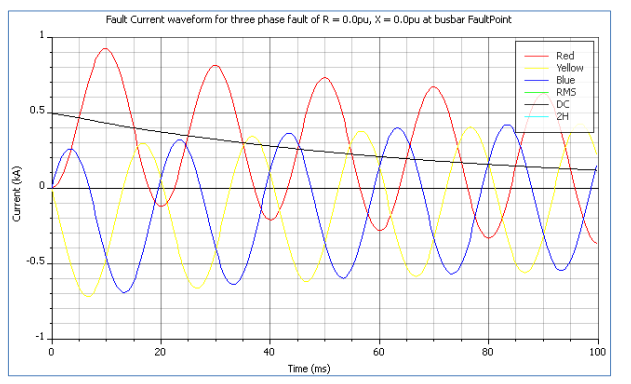What is the Importance of MV Transformer Testing?
Medium voltage transformer testing is crucial for ensuring the safe and reliable operation of electrical power systems. Transformers play a critical role in the distribution and transmission of electrical power by stepping up or down voltage levels as needed. Faults or issues with transformers can result in power outages, damage to equipment, and even safety hazards. Testing of medium voltage transformers helps to identify any faults or issues that may exist, such as insulation breakdown or faulty windings, before they can cause problems. The testing process includes a variety of tests such as turns ratio, insulation resistance, power factor, and transformer oil testing. By conducting these tests, any necessary repairs or maintenance can be performed to keep transformers in proper working order, ensuring a reliable and continuous supply of electrical power to consumers.
Transformer testing has evolved over the years to help determine the electrical, thermal, and mechanical suitability of transformers for operation on modern electrical systems. The types of tests and the procedures for conducting them have been defined by the IEEE Transformers Committee and are published in IEEE Standard C57.12.90 for liquid-filled transformers and IEEE Standard C57.12.91 for dry-type transformers.
This data bulletin provides general information on the various tests available and on the tests that Schneider Electric routinely performs on all medium voltage transformers. - Schneider Electric
Standards
For a more detailed description of the tests and detailed test procedures, please see the IEEE Standards referenced below.
- IEEE C57.12.00—IEEE Standard General Requirements for
Liquid-Immersed Distribution, Power, and Regulating Transformers
- IEEE C57.12.01—IEEE Standard General Requirements for Dry-Type
Distribution and Power Transformers Including Those with Solid-Cast
and/or Resin Encapsulated Windings
- IEEE C57.12.90—IEEE Standard Test Code for Liquid-Immersed
Distribution, Power, and Regulating Transformers
- IEEE C57.12.91—IEEE Standard Test Code for Dry-Type Distribution and
Power Transformers.
Kinds of Tests
The following definitions for the kinds of tests to be performed are from the
IEEE Standards.
- Routine Tests: Routine tests made for quality control by the manufacturer
on every transformer manufactured or representative samples, or on parts
or materials as required, to verify during production that the product meets
the design specifications.
- Design Tests: Design tests made to determine the adequacy of the design of a
particular type, style, or model of transformer or its component parts to meet its
assigned ratings and to operate satisfactorily under normal service conditions
or under special conditions, if specified, and to demonstrate compliance with
appropriate standards. Design tests are made only on representative apparatus
to substantiate the ratings assigned to all other apparatus of basically the same
design. These tests are not intended to be used as a part of normal production.
Test data from previous similar designs may be used for current designs, where
appropriate. Once made, the tests need not be repeated unless the design is
changed so as to modify performance.
- Conformance Tests: Conformance tests that are specifically made to
demonstrate conformity with applicable standards.
Other Tests:
- Other tests so identified in individual product standards that
may be specified by the purchaser in addition to design and routine tests
and may depend on the size, voltage, and type of transformer involved
(Examples: insulation power factor, audible sound).
 |
Figure 1. Routine, Design and Other Test Parameters | Source: Schneider Electric
|
Types and Purpose of Tests
Turns Ratio
The turns ratio test determines the ratio of turns in the primary
winding to that in all other windings of the transformer, so that when rated
voltage is applied to one winding of the transformer, all other winding
voltages will be correct within one half of one percent of the rated nameplate
voltages. The only deviation allowed by the standards is when the volts per
turn exceed the one half of one percent of the rated voltage. The turns ratio
test is performed on all taps of every winding.
Polarity and Phase Relation
Polarity and phase relation tests are
important when transformers are to be paralleled. Paralleled transformers
must have the same polarity and phase relation to avoid short circuits. For
single phase transformers, the polarity test determines whether the primary
and secondary windings are connected for additive or subtractive polarity.
For three-phase transformers, the phase relation test determines if the
angular displacement and relative phase sequence of the vectors
representing the transformer windings are correct.
Resistance
The DC winding resistance is used to calculate the I2R
component of load losses. It is also used to calculate winding temperature
during the temperature test.
No-Load Loss: The no-load losses or excitation losses consist of the iron
loss of the core, the dielectric loss in the insulation, and the winding loss due
to the circulation of the exciting current. Normally, the dielectric loss and
winding loss are negligible when compared to the iron loss.
No Load Loss
No-load losses,
as the name implies, are losses generated in the transformer with no load
on the secondary terminals. No-load loss tests are measured at 100% of
rated voltage.
Excitation Current
This test determines the current required to maintain
the magnetic excitation of the core. It is expressed in per unit or percent of
the rated transformer winding current. Excitation current is measured at
100% of rated voltage.
Impedance
The impedance is normally expressed in terms of percent of
rated voltage. The impedance voltage is that voltage required to circulate
rated current in one winding with the other winding shorted. Due to
manufacturing and material tolerances, the impedance will vary from the
design and guaranteed value. For this reason, the IEEE Standards have
established impedance tolerances of ± 7.5% for two-winding transformers,
and ± 10% for three-winding transformers.
Load Loss: This test measures the losses in the transformer when it is
operating at full load.
Load Loss
Load loss is the sum of the I2R losses in the windings,
`stray losses due to stray fluxes in the windings, tank, enclosure, assembly
parts, etc., and the eddy losses due to circulating currents. The I2R loss
component is by far the largest component of the load loss.
Quality Control Impulse
This test is not a routine test for all transformers; however the test is performed on every Schneider Electric transformer to verify the Basic Impulse Level (BIL) rating of the transformer. The test consists of one reduced and one full wave. The wave shape and voltage level is determined by the voltage class of the transformer and the BIL specified for that voltage class. When an ANSI impulse test is specified, two chopped waves will be applied to the transformer terminals in addition to the reduced and full waves. A full wave represents a disturbance that occurs some distance from the transformer and travels along the transmission line to the transformer. The chopped wave represents a traveling wave created by a disturbance that occurs some distance from the transformer that flashes to ground near the transformer terminals. For distribution class transformers with low voltages less than the 5 kV class, the impulse tests are normally performed only on the high voltage terminals.
 |
| Figure 2. Basic Impulse Levels - Distribution Class | Source: Schneider Electric |
Applied Potential
This test is sometimes referred to as the high-pot or low frequency test. The purpose of this test is to verify the adequacy of the insulation between the winding being tested to all other windings and to ground. The test is made at 60 Hz for one minute. Induced Potential: This test is made to verify the adequacy of the turn-to-turn insulation, layer-to-layer insulation, and phase-to-phase insulation. The test is made at twice the rated voltage, with a 400 Hz source, and is applied for 7200 cycles.
Partial Discharge
This test is a routine test for all cast coil transformers. The purpose of the test is to very that the casting process has not left any voids (air pockets) in the windings. Leak: All liquid-filled transformers are tested under pressure during the final assembly and preparation for shipment. Any reduction in pressure or visible sign of liquid seepage will be repaired before shipment.
Regulation and Efficiency
Regulation is the change, or drop, in secondary voltage as the load is increased on the transformer and is expressed as a percentage of the rated secondary voltage. Efficiency is the ratio of output watts to the input watts and is expressed as a percentage. Regulation and efficiency are calculated values from impedance and loss testing.
Temperature Rise
This test is a design test and is performed to verify that the average winding temperatures do not exceed the guaranteed values specified for the temperature rating of the insulation system. The tests are made by circulating rated current in the windings until the temperature has stabilized. The change in winding resistance from a cold start to the resistance at the stabilized temperature is used to calculate the average winding temperature rise.
Audible Sound Level
This is a design test that measures the average sound level generated by the transformer when energized at rated voltage and no-load applied to the terminals.
Zero Sequence Impedance
This test measures the line to neutral impedance when the transformer has a wye connected winding(s). The zero sequence impedance is also expressed as a percentage of rated voltage.
Radio Influence Voltage (RIV)
Also known as Telephone Influence Factor (TIF). This test, which is performed on liquid-filled transformers, is similar to the partial discharge test performed on cast coil transformers. The purpose
of this test is to determine the amount of electrical discharges that occur in the electrical insulation as a result of high velocity ionization under the influence of an electrical field, and to ensure the dielectric strength of the insulation is not exceeded.
Short Circuit
This test is performed only on prototype transformers only to verify the mechanical and thermal integrity of the core and coil assembly and other electrical components during a through-fault on the transformer. Because of the power required to perform this test, it has to be performed at a high power test laboratory which has the high-power equipment necessary to perform the test.
Insulation Power Factor
The ratio of power dissipated in the insulation in watts to the product of the effective voltage and current in volt-amperes when tested with a sinusoidal voltage. This test is used to give an indication
of the condition (dryness) of the transformer insulation. Presently, there are no established limits for acceptable power factor readings in the transformer standards. Acceptable power factor readings are a matter of judgment and experience. However, a power factor value of 1.0% or less for distribution
transformers and 0.5% or less for large power transformers are generally used as acceptable values.
Insulation Resistance
This test is also used to give an indication of the dryness of the transformer insulation. Although not considered a routine test, it is often performed by manufacturers to give an indication of the condition of the transformer insulation. The insulation resistance varies with moisture contend, cleanliness, and temperature of all insulating parts.
Gas Analysis
This test does not measure the performance of the transformer, but is a chemical analysis of the liquid to determine the levels of gases being produced by the operation of the transformer. When a transformer is operated, gases are generated from the insulation materials in the transformer. Gas generation is a natural phenomenon within transformers that can come from a variety of events, including electrical disturbances, thermal events, conductor losses, and other temperature effects. Although not common, it is possible for some transformers to operate throughout their useful life with large quantities of combustible gases present.
Dissolved Gas Analysis
Dissolved Gas Analysis (DGA) is most effective when performed over time on a periodic basis starting when the transformer is put into service. This becomes the baseline for future comparisons.
View or Download PDF
- Title: Medium Voltage Transformer Testing | Class 7200, 7300, and 7400
- Source: Schneider Electric




.webp)











No comments: